 Essay Writing Web
Essay Writing Web
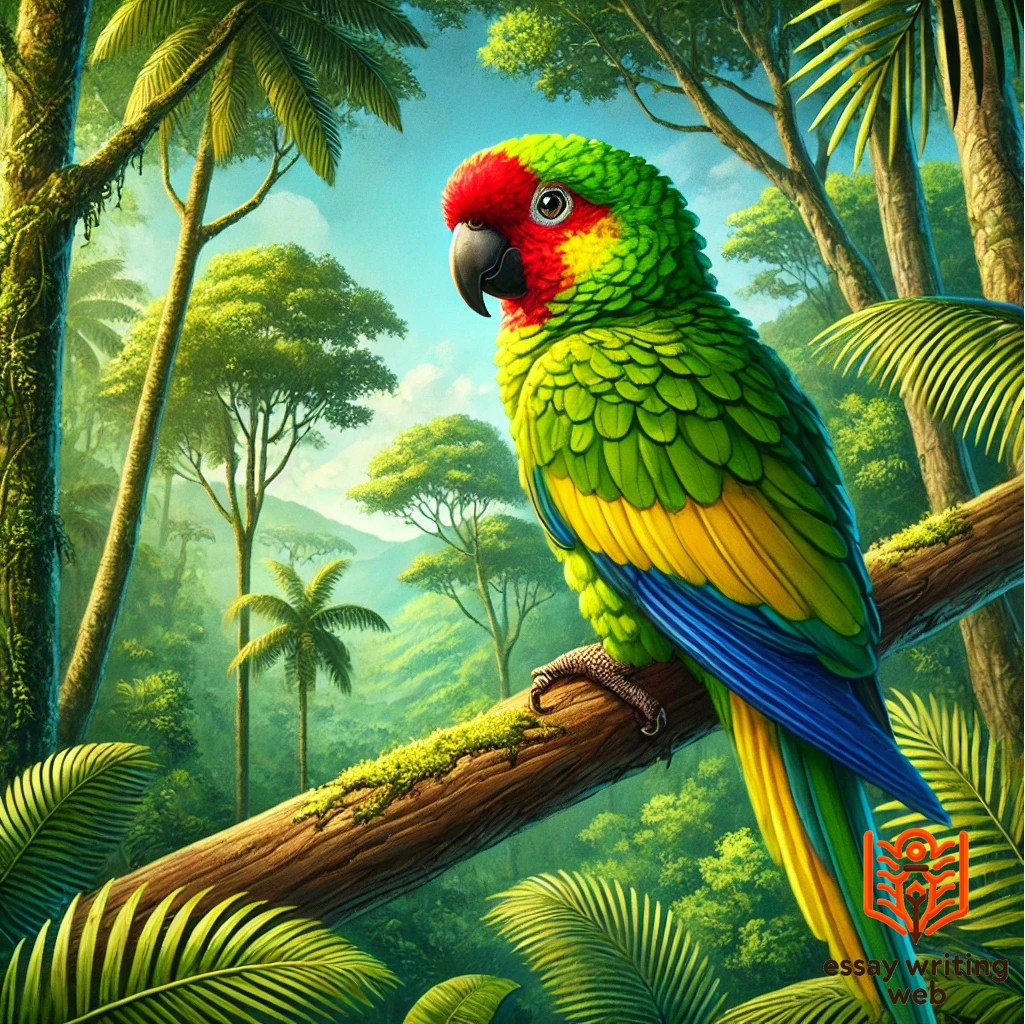
 14-09-2024
14-09-2024
 www.essaywritingweb.com
www.essaywritingweb.com
Parrots, belonging to the Psittacidae family, are one of the most fascinating bird species known for their striking colors, intelligence, and ability to mimic human speech. Found primarily in tropical and subtropical regions, these birds have captivated the attention of both scientists and bird enthusiasts alike. There are approximately 393 species of parrots, each exhibiting a variety of sizes, colors, and behaviors. Some of the most well-known species include the African Grey Parrot, Macaws, and Cockatoos.
Parrots, belonging to the Psittacidae family, are one of the most fascinating bird species known for their striking colors, intelligence, and ability to mimic human speech. Found primarily in tropical and subtropical regions, these birds have captivated the attention of both scientists and bird enthusiasts alike. There are approximately 393 species of parrots, each exhibiting a variety of sizes, colors, and behaviors. Some of the most well-known species include the African Grey Parrot, Macaws, and Cockatoos.
Physically, parrots are distinguished by their curved beaks and zygodactyl feet, meaning they have two toes pointing forward and two pointing backward. This unique feature helps them easily grasp objects, aiding in climbing and feeding. Their vibrant plumage, often a mix of green, red, blue, and yellow, not only makes them stand out but also plays a role in their interaction with the environment.
Parrots are known for their sharp intelligence, often being compared to young children in terms of problem-solving and communication skills. Many species can imitate sounds, and some, like the African Grey, can develop extensive vocabularies, making them popular pets. However, this same popularity has led to challenges, as parrots are frequently captured and sold illegally, putting several species at risk of extinction.
In summary, parrots are not only beautiful and intelligent creatures but also important members of the ecosystem. Their conservation is crucial to maintaining the delicate balance of their natural habitats.
Parrots are known for their vibrant and colorful plumage, which varies widely among species. Most parrots have feathers in shades of green, often combined with bright reds, blues, yellows, and oranges. This colorful appearance helps them blend into their natural environments, such as rainforests and jungles, providing both camouflage and an advantage in courtship displays.
One of the most distinguishing physical traits of parrots is their strong, curved beak. This powerful beak is adapted for cracking nuts, seeds, and fruits, which make up the bulk of their diet. The lower mandible of the beak moves against the upper mandible, giving parrots the ability to manipulate objects with great precision.
Parrots also possess zygodactyl feet, which means they have two toes facing forward and two facing backward. This toe arrangement allows them to grasp and hold objects, making them highly skilled climbers. These feet enable parrots to move nimbly through trees, grasp food, and even play with objects in captivity.
In terms of size, parrots vary greatly. The smallest species, such as the Pygmy Parrot, can be as small as 8 cm, while the largest, like the Hyacinth Macaw, can reach up to 1 meter in length. Their physical characteristics make parrots unique and perfectly adapted to their environments.
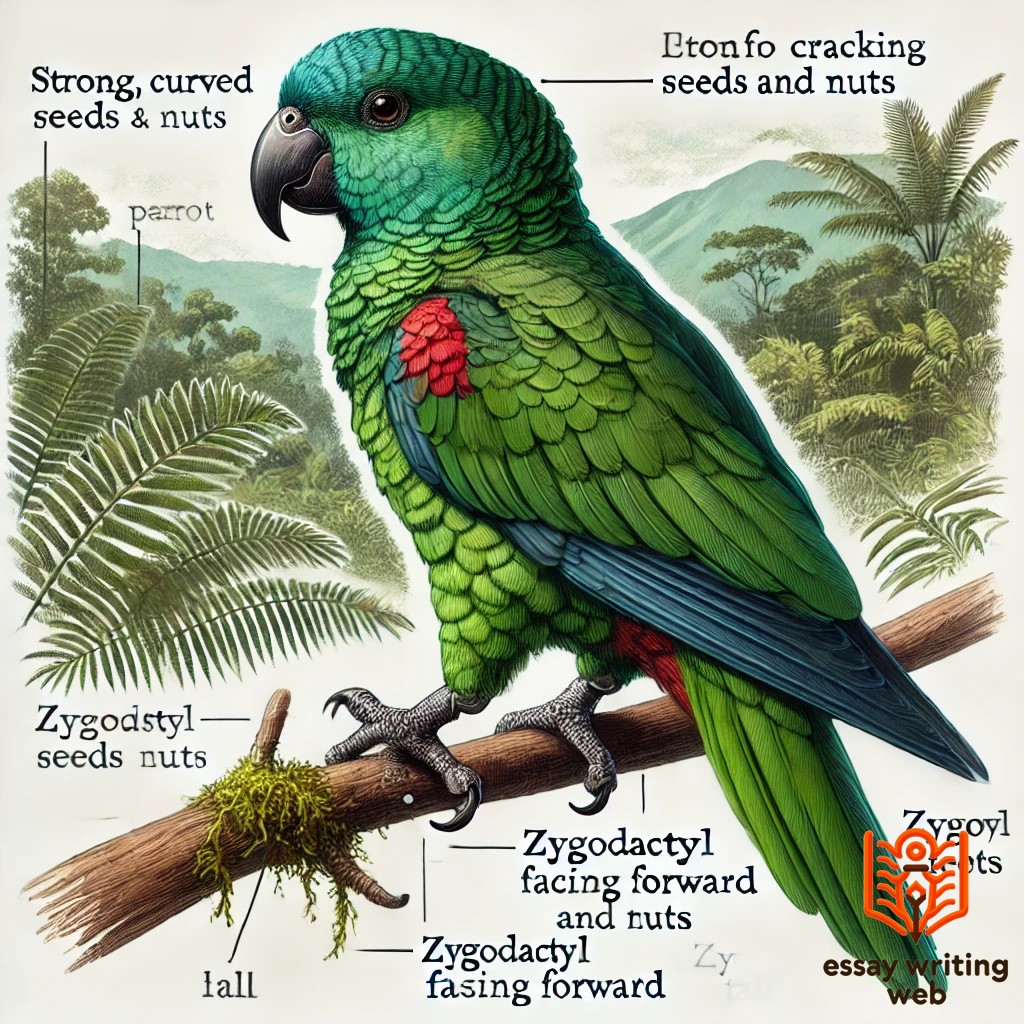
There are many different types of parrots around the world, each varying in size, color, and behavior. Here are some of the most well-known types of parrots.
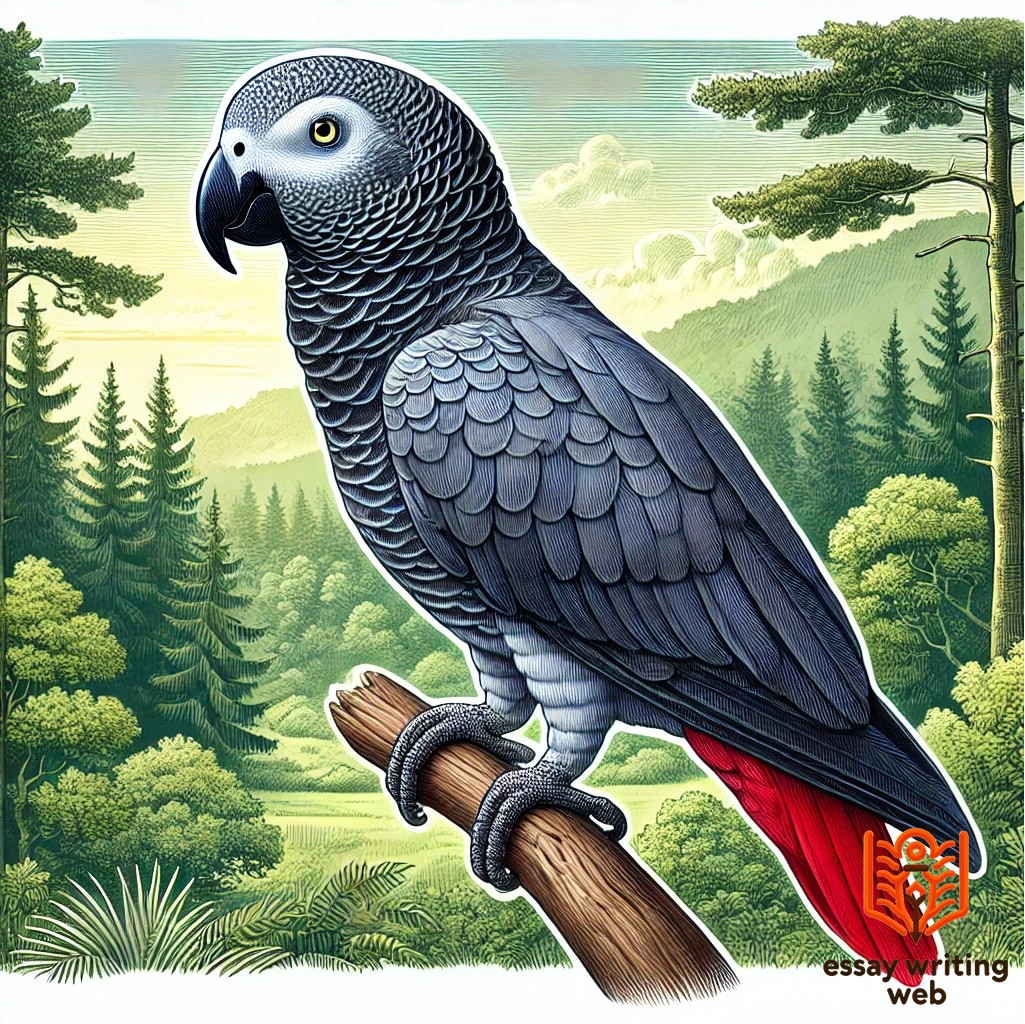
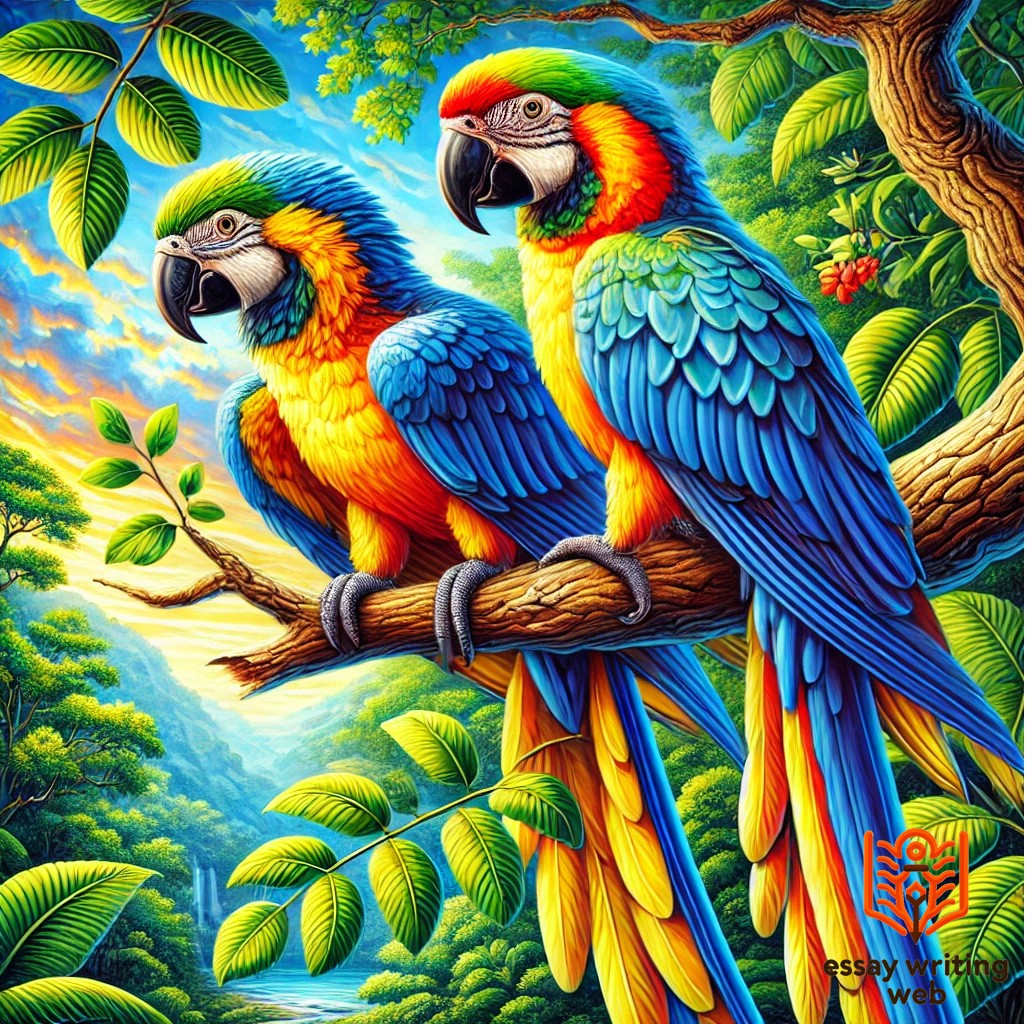
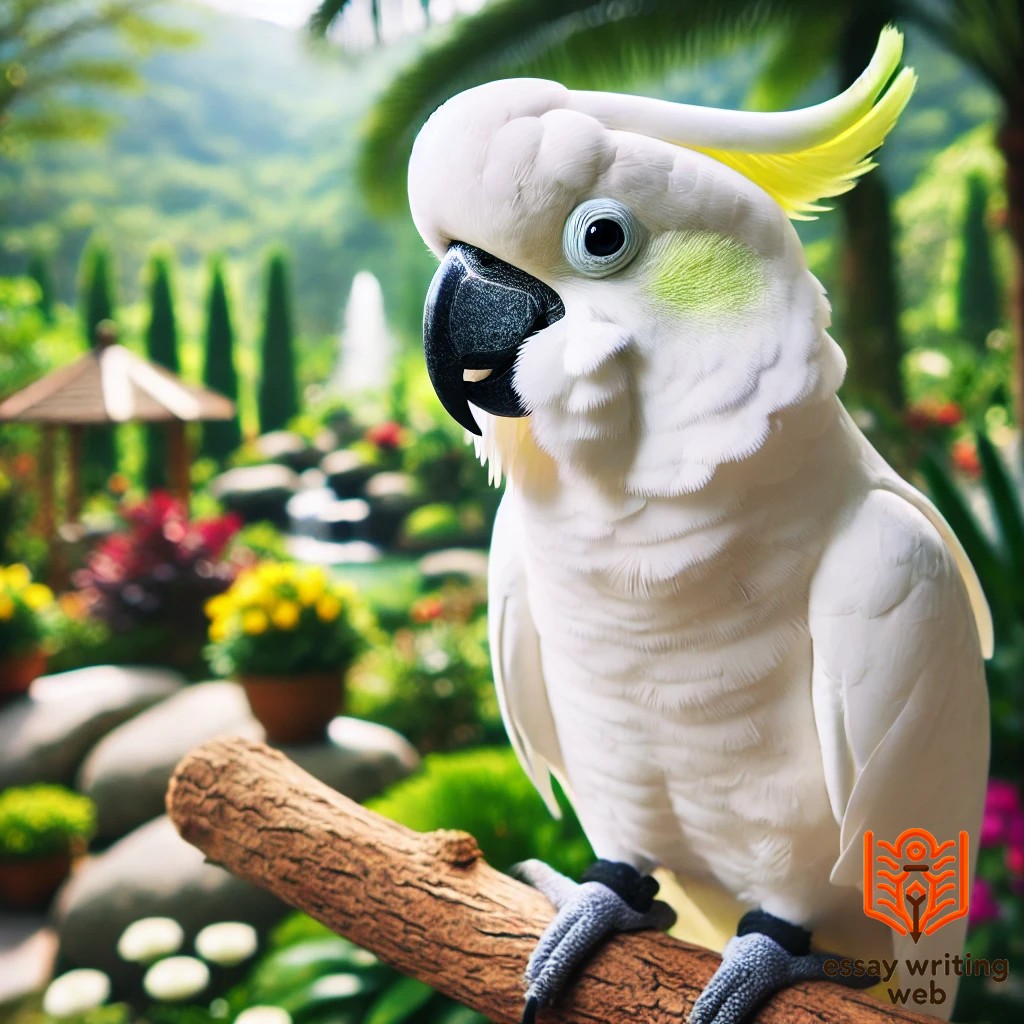

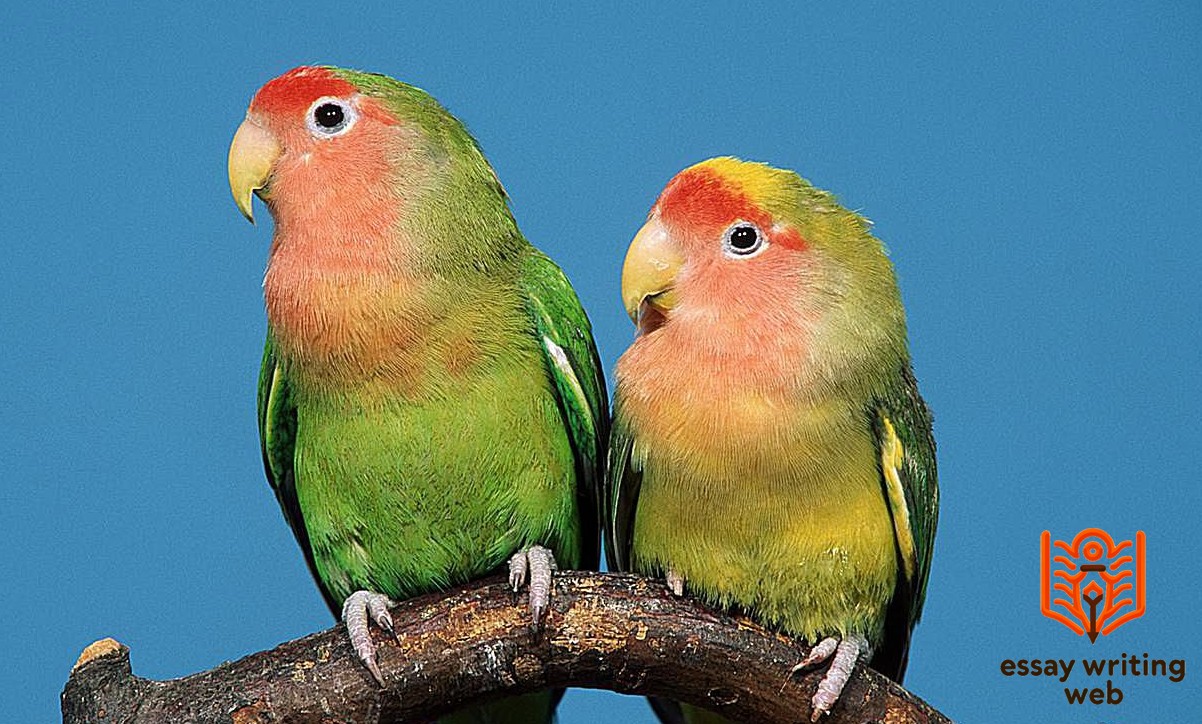
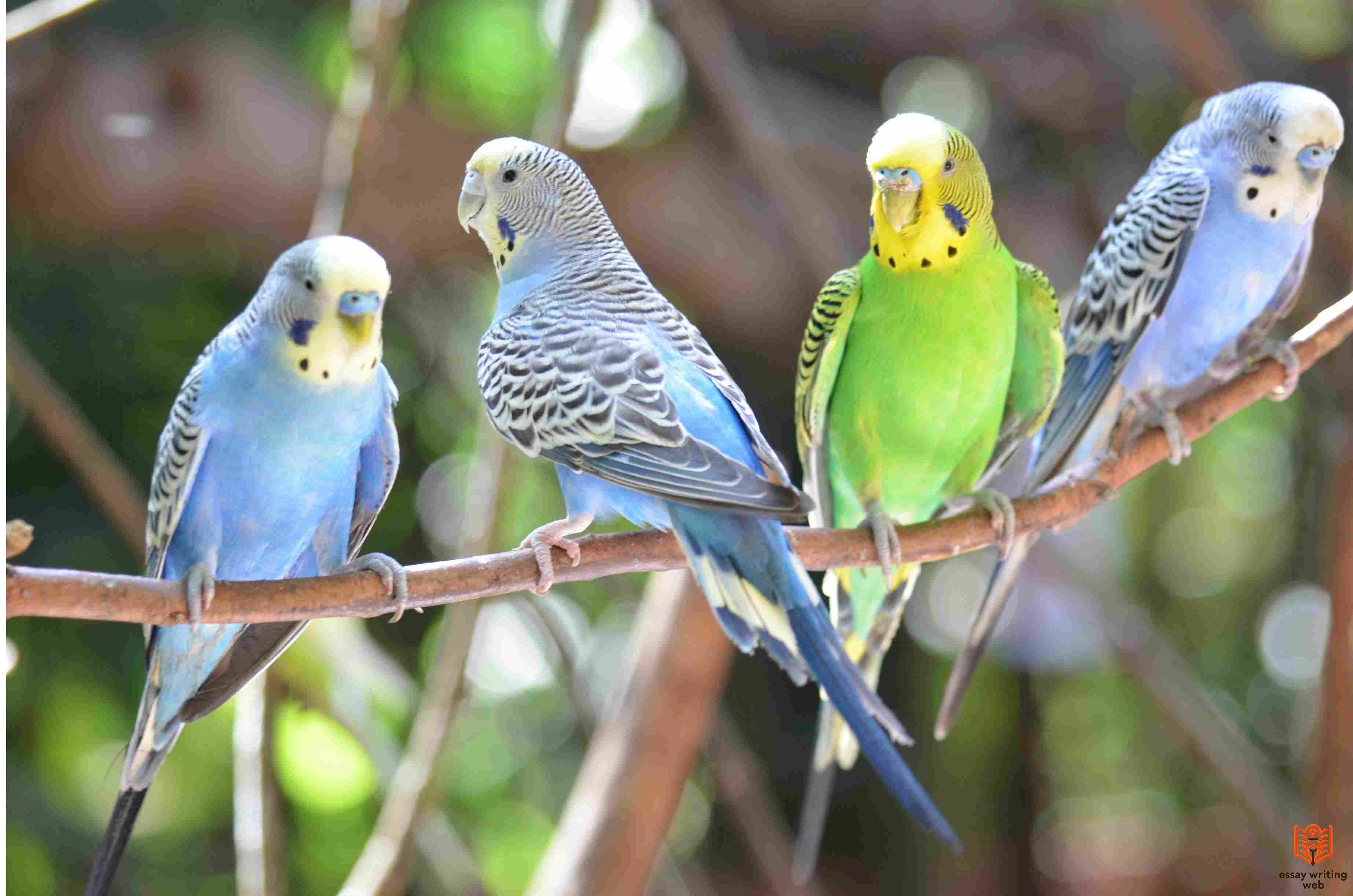
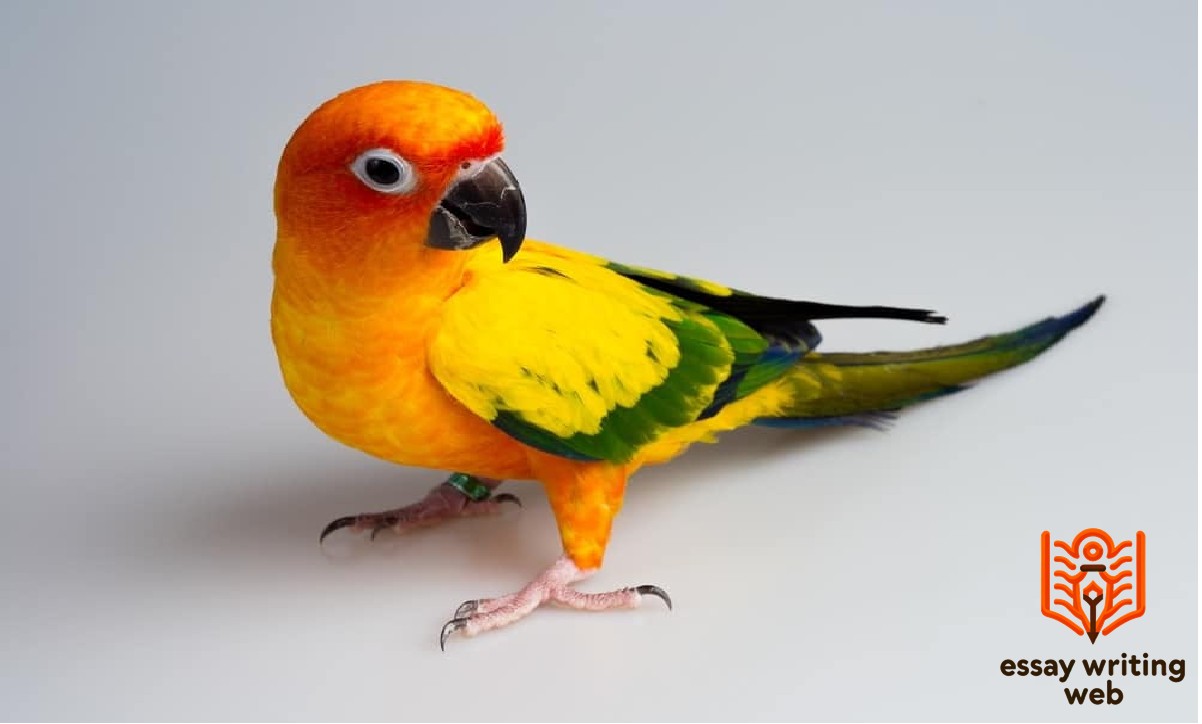

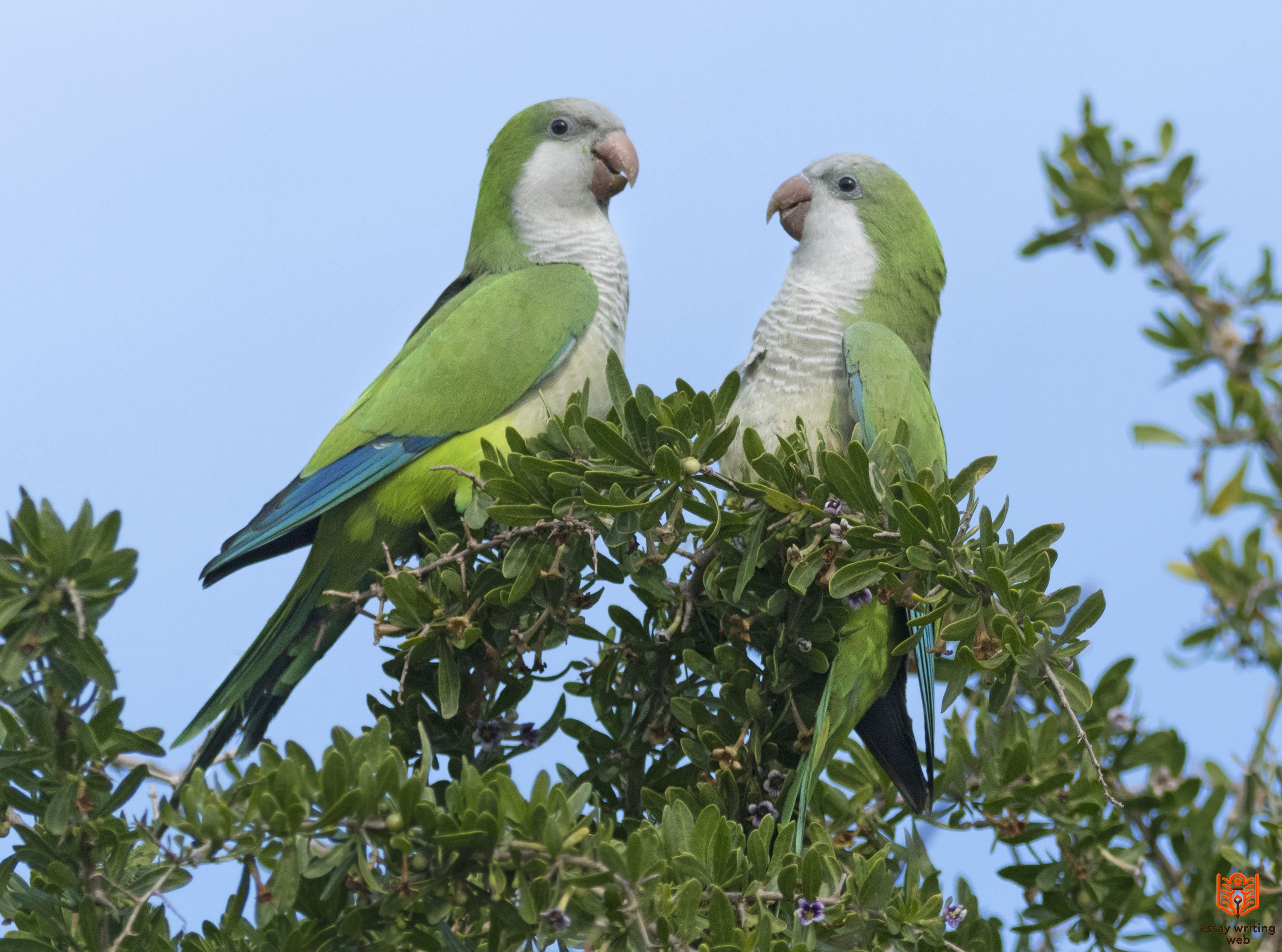
Parrots are primarily found in tropical and subtropical regions across the world, with their natural habitat ranging from dense rainforests to savannas and grasslands. The largest population of parrots is located in Central and South America, where species like macaws and Amazon parrots thrive in the humid jungles. These regions provide parrots with abundant food sources such as fruits, nuts, and seeds, as well as plenty of trees for nesting.
In Africa, parrots like the African Grey are found in the rainforests of West and Central Africa, where they prefer dense, forested areas. Australia is also home to many parrot species, including cockatoos and budgerigars, which inhabit various ecosystems such as woodlands, savannas, and coastal areas. In these regions, parrots have adapted to survive in both wet and dry conditions, with some even thriving in urban environments.
Parrots are also found in parts of Asia, particularly in South and Southeast Asia, where species like the ring-necked parakeet are common. Despite their wide distribution, many parrot species are now under threat due to habitat destruction, illegal trapping, and climate change, which are disrupting their natural habitats and reducing their populations. Conservation efforts are crucial to protecting these vibrant and intelligent birds.
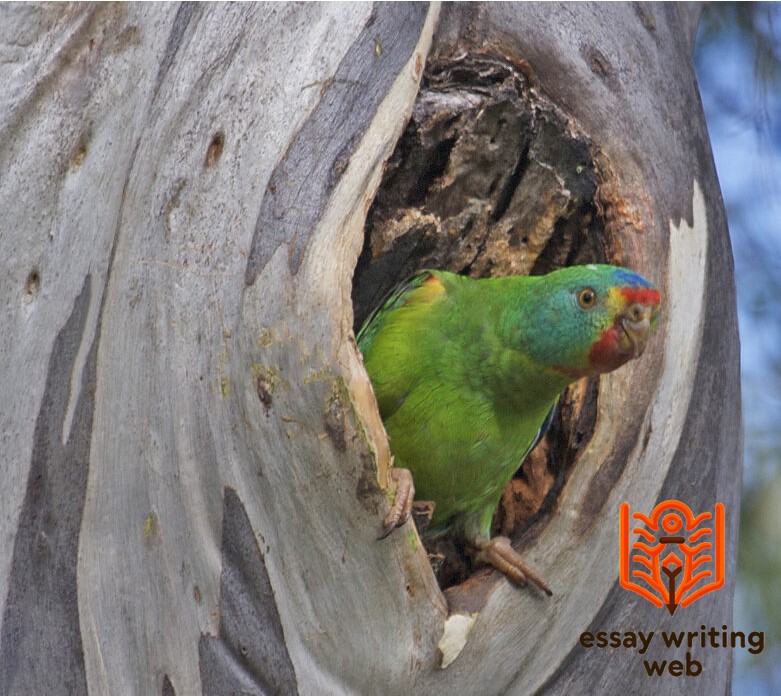
Parrots are primarily herbivorous, with a diet consisting of fruits, seeds, nuts, flowers, and nectar. Their strong, curved beaks are perfectly adapted for cracking open tough shells of nuts and seeds, making them efficient foragers. Some larger species, such as macaws, have exceptionally powerful beaks that allow them to break through the hard shells of even the toughest nuts, like Brazil nuts.
In the wild, parrots are opportunistic feeders, often foraging in flocks. They move from tree to tree in search of food, relying on their keen sense of sight to locate ripe fruits and seeds. Parrots are also known to play a role in seed dispersal, as they sometimes drop seeds while feeding, contributing to forest regeneration.
Many parrots also enjoy consuming nectar from flowers, and some species, like the lorikeets, have specialized brush-tipped tongues designed for this purpose. In addition to plant-based food, a few species, such as the Kea from New Zealand, are known to be omnivorous, occasionally eating small insects or carrion to supplement their diet.
In captivity, parrots are fed a variety of foods, including specially formulated pellets, fresh fruits, vegetables, and seeds, which help mimic their natural diet and keep them healthy.

One of the most fascinating traits of parrots is their ability to mimic human speech. Parrots, especially species like the African Grey, Amazon parrots, and some cockatoos, are well-known for their exceptional vocal mimicry. This ability stems from their unique vocal apparatus, which includes a syrinx, a specialized organ located at the base of their trachea. Unlike humans, parrots do not have vocal cords; instead, they manipulate airflow through the syrinx to produce a wide range of sounds, including words, tones, and even complex phrases.
Parrots mimic sounds primarily as a form of social bonding. In the wild, they use vocalizations to communicate with their flock, alerting others to potential dangers or sharing information about food sources. When parrots are kept as pets, they often imitate human speech to interact with their human caregivers, whom they see as part of their social group.
Interestingly, parrots are not just mindless imitators; they can often use words in the correct context, associating certain sounds with actions or objects. For example, an African Grey parrot may learn to say "hello" when someone enters the room or request specific food items by name. This remarkable ability has intrigued scientists, leading to studies that explore the cognitive capabilities of parrots, proving them to be highly intelligent creatures.
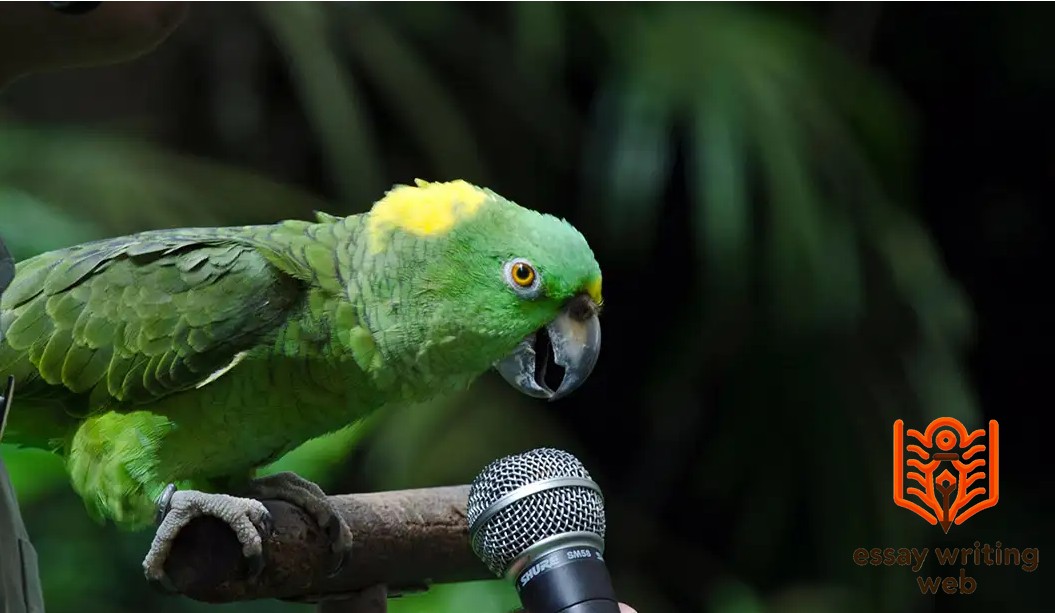
Parrots play a crucial role in maintaining the health and balance of ecosystems, particularly in tropical and subtropical regions. As seed dispersers, parrots contribute to forest regeneration. When they consume fruits, nuts, and seeds, they often drop or discard some, allowing new plants to sprout and grow in different areas. This helps maintain biodiversity by ensuring the spread of various plant species.
In addition to their role as seed dispersers, parrots also act as pollinators. Certain species, like lorikeets, feed on nectar from flowers, inadvertently transferring pollen from one flower to another, aiding in plant reproduction.
Furthermore, parrots are an important part of the food chain, serving as prey for larger predators such as birds of prey and mammals. By fulfilling these ecological roles, parrots help sustain the natural balance in their habitats, contributing to the health and diversity of the ecosystems in which they live.
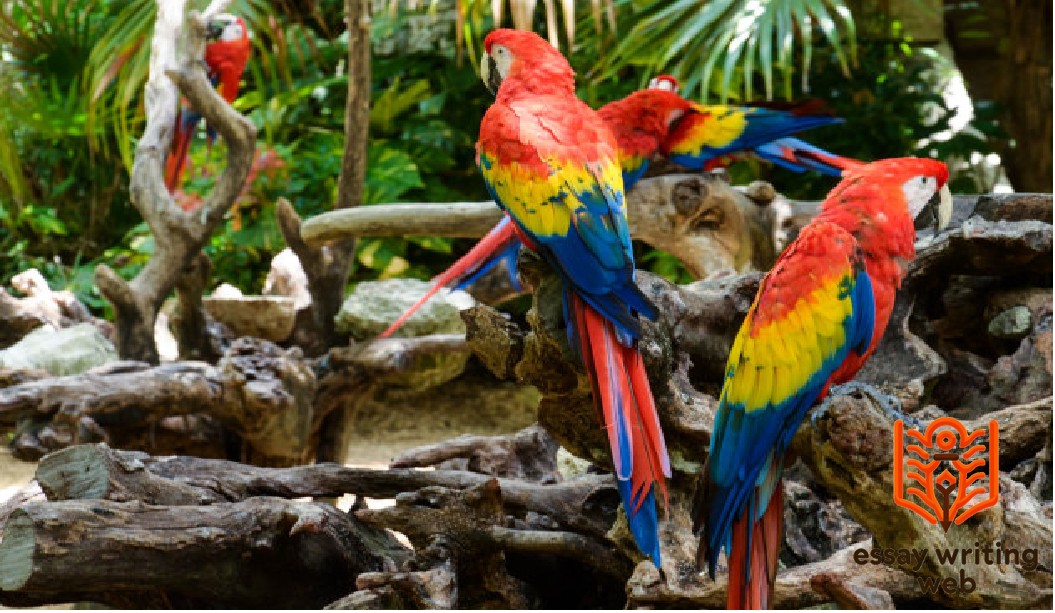
Parrots have long been popular pets due to their vibrant colors, intelligence, and ability to mimic human speech. Species like the African Grey, Cockatiel, and Budgerigar are particularly favored for their friendly personalities and social nature. However, owning a parrot requires a deep commitment, as these birds are highly intelligent and need mental stimulation, attention, and a proper environment to thrive.
Parrots, especially larger species, can live for several decades, with some even outliving their owners. This longevity demands long-term care, including a nutritious diet, social interaction, and regular vet check-ups. Parrots are social creatures and need companionship, whether from their human owners or other birds. Without enough interaction or mental stimulation, they can develop behavioral issues such as feather plucking or aggressive tendencies.
While parrots can be delightful companions, their loud calls and need for space can pose challenges in households. They also require large cages and ample time outside the cage for exercise and interaction. Additionally, the exotic pet trade has put many parrot species at risk, making it crucial for potential owners to consider adopting from reputable breeders or rescues.
Overall, parrots can make wonderful pets for those willing to dedicate the time, effort, and resources required for their care and well-being.
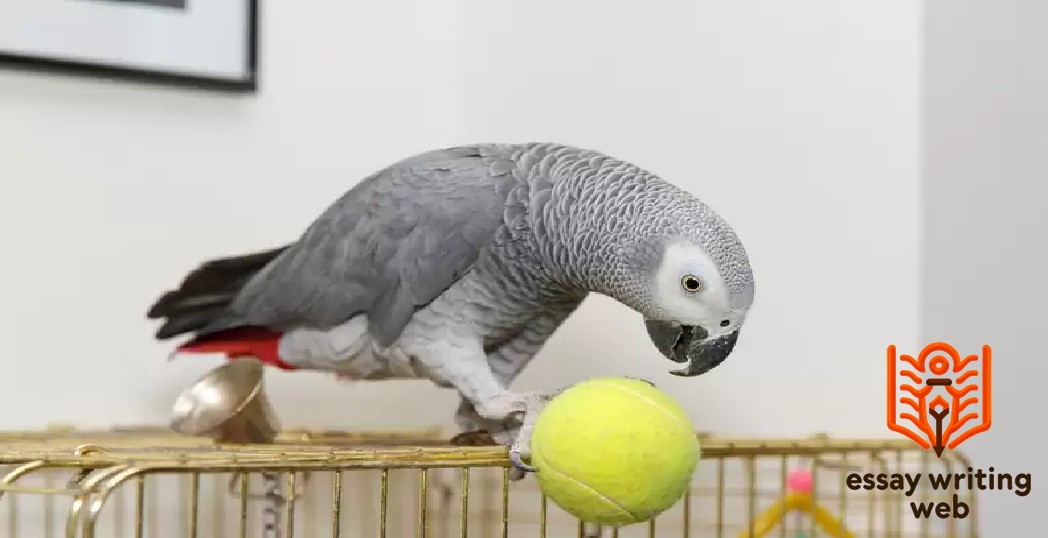
Parrots face numerous challenges in the wild, making the conservation of many species a pressing issue. Habitat destruction, particularly deforestation in tropical regions, poses one of the greatest threats to parrots. As forests are cleared for agriculture, urbanization, and logging, the natural homes of parrots are rapidly disappearing. This loss of habitat not only affects their nesting and feeding sites but also disrupts their entire ecosystem.
In addition to habitat destruction, illegal trapping for the pet trade has severely impacted parrot populations. Many species are captured and sold illegally, leading to a dramatic decline in their numbers. Popular species like the African Grey Parrot are particularly at risk, and several are now listed as endangered or vulnerable.
Conservation efforts are crucial to reversing these trends. Organizations and governments worldwide are working to protect parrot habitats, implement breeding programs, and regulate the illegal pet trade. Public awareness campaigns also play a vital role in encouraging responsible ownership of parrots and discouraging the demand for wild-caught birds.
Successful conservation requires a multi-faceted approach, including habitat protection, legal measures, and education. By working together, these efforts aim to secure a future for parrots and preserve their role in the global ecosystem.

Conservation efforts to protect parrot species have become increasingly important as many parrots face threats from habitat loss, illegal wildlife trade, and environmental changes. One of the primary strategies for parrot conservation is habitat protection. Many conservation organizations work with governments and local communities to establish protected areas, such as national parks and reserves, where parrots can thrive in their natural environments without the threat of deforestation or human encroachment.
Another significant aspect of parrot conservation is breeding and reintroduction programs. Zoos and wildlife centers worldwide are involved in breeding endangered parrot species in captivity with the goal of releasing them back into the wild. These programs have been successful in increasing populations of critically endangered species like the Spix’s Macaw, which was once extinct in the wild but has now been reintroduced into its native habitat in Brazil.
Efforts to curb illegal poaching and the pet trade are also essential to parrot conservation. International agreements like the Convention on International Trade in Endangered Species (CITES) help regulate the trade of wild parrots, protecting species that are at risk.
Public education and awareness campaigns further promote responsible pet ownership and discourage the illegal purchase of wild parrots, contributing to long-term preservation of these remarkable birds.
